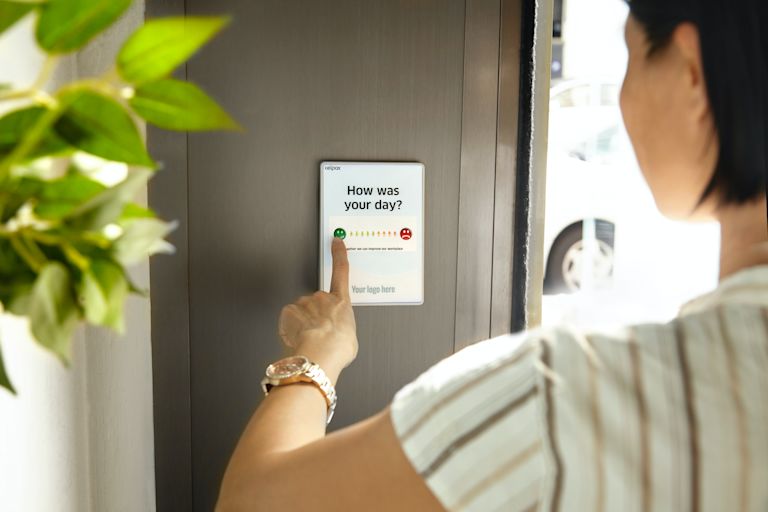Getting customer feedback is one of those things that tend to be overlooked. Why? Because collecting and sifting through complex information can be a bit dull. However, successful companies know that voice of customer (VOC) research is the perfect source for brilliant messaging and new business opportunity ideas.
Analyzing customer feedback provides valuable insights into the minds of customers and illuminates what they really want – or better yet – what they didn’t know they even wanted. That said, the key hurdle to overcome is, how do you get the customer feedback and what you do with it, once you’ve got it?
The feedback mixing pot
Let’s consider that collecting customer feedback is like baking a cake. Your ingredients stay roughly the same, but the exact recipe changes – depending on the type of cake you’re baking (a sponge, mud cake or butter cake).
Each variation in ingredient (or method of collection), changes the result of the cake… and similarly changes the style of feedback analysis, as well as the value and use of what you’ve collected.
Just the same, choosing the right temperature to bake the cake – and feedback channel for your research goal – will shape the way the results look. As far as a cake is concerned, it affects the yum factor and for feedback, that means the number of responses, the quality of them and much more.

So now let’s look at how you can vary the feedback recipe, to deliver the results you want (and need).
Customer feedback channels
1. Net Promoter Score (NPS)
One of the most popular ways of getting customer feedback is through an NPS survey. They’re a great quantitative way to efficiently gauge a customer’s loyalty and their perceptions of your organization. A great tip for an NPS survey is to make the questions easy to understand and convenient to answer – because you want to make sure the survey enhances the overall customer experience, not ruin the customer’s perception of your brand.

2. Surveys
Another common way of getting customer feedback is through qualitative surveys. The clear difference between surveys and NPS scores is that surveys tend to ask more open questions – about any and all topics (of your choice) – and to a greater depth.
Naturally, that type of feedback provides far more insightful knowledge (and frequently amazing VOC quotes), but it's also more difficult to capture.
Firstly, asking the right questions is an art form all in itself. There are so many factors affecting the flow of a survey, I’d recommend checking out Hubspot’s Ultimate Guide to Surveys. On top of that, are you providing an incentive for customers? After all, it takes time and energy to fill out a survey –why would customers want to do it, unless there's something in it for them!?
If you’d like to see a survey in action, we’re currently conducting our own research about the rich text editor landscape –check out The State of Rich Text Editors Survey! Drop us a note and let us know what you think!
3. Community observations
What better way to know your customers than observing their interactions out in the wild! Depending on the industry you’re in, there’s bound to be some sort of community (most likely online) where customers talk about your products and competitors. Social media, hashtags, comment sections and interest groups are a great place to note what customers really think about your product.
Indirectly collecting customer feedback (through observation) allows the opinions of customers to be as authentic as possible, it lets you draw more meaningful conclusions and again, often provides great VOC quotes that can be mirrored in your messaging.
4. Customer interactions
Before you go ahead and start creating complicated projects to get customer feedback, don’t forget to first tap into your internal resources. Start by talking to your sales and customer service departments – to get first-hand source information from the people who regularly interact with your customers. They’re going to have an abundance of knowledge that will definitely shed some light on your research goals – and could even be the starting point for a different direction in your search for customer feedback.
Building a customer feedback strategy (The Loop Strategy)
We’ve covered some of the ways to get customer feedback. But then what do you do with it? Some would say that the most important aspect of getting customer feedback is to know what you want from your collection (your endpoint). Because if you know that, you can reverse engineer your collection methods and approaches, to maximize the results.
It boils down to having a strategy. Many organizations implement a strategy known as the Customer Feedback Loop. It’s fairly straight forward, and is made up of four stages:
- Ask –this stage relates to the feedback channels. It's how you acquire customer information.
- Categorize – once you’ve asked for feedback, you need to organize the information so that you can analyze it effectively.
- Act – why did you collect the information in the first place? To make changes! Therefore, make sure you make decisions based on the feedback received.
- Follow-up – to close the loop, thank your customers and provide a message to show you’re actively listening and making changes according to their feedback.
Tiny’s customer feedback
At Tiny, getting customer feedback is invaluable to our growth. It actively guides our decision-making and shows us ways we can continuously improve our world-class WYSIWYG editor.
On that note, check out the TinyMCE Roadmap, where you can show us directly what new features you'd like to see available in TinyMCE for the future.
